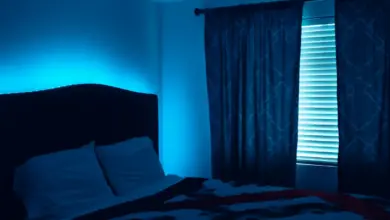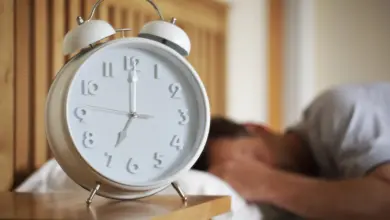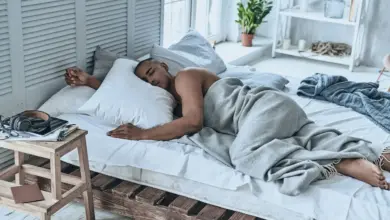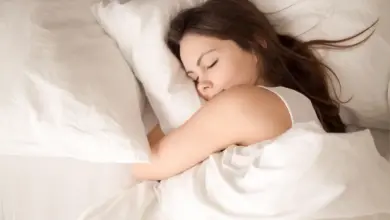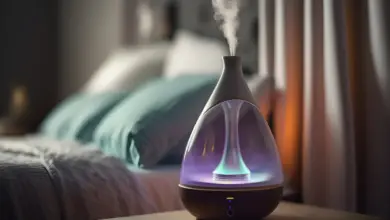16 Sleep Statistics Australians Need to Know
Here are some sleep statistics Australians need to know! In April 2019, the Australian Parliament ordered a federal investigation to determine why Australians were not sleeping well and why they would fall asleep at work and behind the wheel.
It was an inquiry on sleep health. This is something that no other country had done. This speaks volumes about Australia’s sleep crisis. Some experts call it Australia’s insomnia epidemic.
Look at these numbers.
Sleep Statistics Australians Need to Know: Key points
- Two out of five Australians have regular sleep problems. This is 10.3 million Australians or 40% of the population not napping as recommended (7 to 9 hours).
- Nearly 60% of Australian adults have at least one symptom of a sleep disorder. Of these, 14.8% of Australians show definite signs of insomnia. Few seek help.
- In Australia, 25% of 12-15-year olds don’t get the 8-10 hours they need to sleep on school nights. This rises to 50% for 16-17-year-olds.
- Only 20% of Australians sleep uninterruptedly through the night.
- The Australian economy is losing $66.3 billion each year due to sleep deprivation.
- 40 percent of Australians who are sleep-deprived die from heart disease and diabetes.
- Australians are 20% more likely to have fallen asleep behind the wheel than they were when awake. 5% have had a car crash.
- Nearly 80% of Australians say they are less productive when they sleep poorly.
- The average Australian parent of a newborn child loses two hours of sleep per night, or 30 days of sleep.
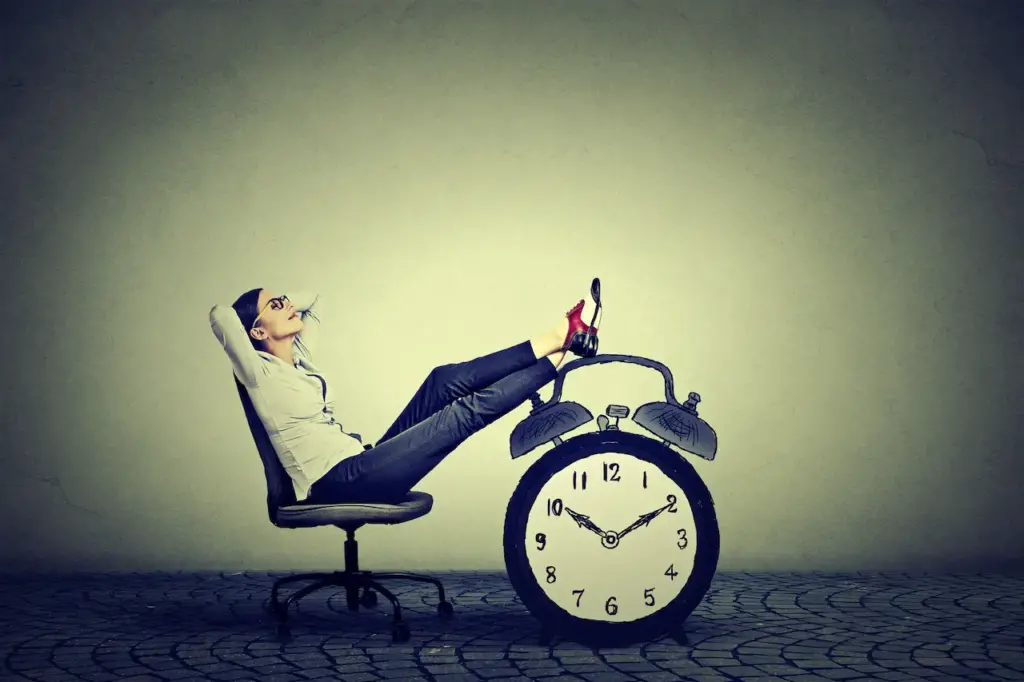
1. Sleep Deprivation
- According to the Philips 2020 Global Sleep Survey, only 45% of Australians are satisfied about their sleep.
- Only 20% of Australians sleep uninterruptedly through the night.
- 10% of Australians sleep for more than one hour, when the recommended range is between 10 and 20 minutes.
- 48.8% of Australians say that their daily schedule is disrupting their sleep.
Source: Philips 2020 Global Sleep Survey and Sleep Health Foundation
Want to learn more? Read: 16 Smartphone Statistics Australia Should Know (2024)
2. Sleep Deaths & Accidents
- A study by Deloitte Access Economics, commissioned by the Sleep Health Foundation, found that 3,017 Australians suffered from sleeplessness between 2016-2017.
- 394 of these deaths were caused by industrial accidents, road accidents and heart disease and diabetes related to sleep disorders.
- Sleep Health Survey of Australian Adults, 2016 found that 20% of Australians fell asleep while driving. Sleep-deprived Australians are 5% more likely to be involved in a car crash.
- The Queensland Government reported that fatigue-related crashes resulted in an average of 31 fatalities and 462 serious injuries each year in Queensland, according to statistics shared by the Queensland Government in 2018.
- 29% of drivers drive while drowsy at least once a month.
- According to a new report, drivers who haven’t had a nap in 17 hours are just as safe behind the wheel of someone with 0.05 percent blood alcohol.
- The majority of sleep-related crashes occur between 2am-6am, and 2pm-4pm.
- More than 50% of fatigue-related accidents occur within 25km of the departure point, meaning that driving while drowsy is not recommended, even for short trips.
Source : National Sleep Health Foundation
3. Sleep Deficit and Australian Economy
- Australians spend $66.3 billion per year on sleep deprivation.
- The financial cost is $26.2 billion, including health bills at $246 per individual, productivity losses at $2,418 each, informal care expenses of $82 per individual, and other welfare costs of $802 per adult, according to the 2017 Deloitte Access Economics report Asleep On the Job.
- The remaining $40.1 billion represents the non-financial costs of healthy life lost due to disability and premature deaths caused by inadequate sleep.
- Stress and disorders such as sleep apnoea are preventing you from getting a good sleep.
- According to the 2016 Sleep Health Survey for Australian Adults, 13% of women and 21% of men fell asleep while at work within a single month.
Source: National Sleep Health Foundation and Deloitte Access Economics
4. Sleeplessness: Causes and Treatment
- According the the 2018 Philips Global Sleep Survey 51% of Australian adults were awake at night due to worry. 27% were up because they had a physical discomfort or illness.
- According to a separate survey conducted in 2019, 24% of Australians are concerned about their children. 15% are worried about aging parents. 19% worry about work stress. 14% are concerned about job security.
- The Sleep Health Foundation reported in 2017 that 44% of adults used the Internet right before going to bed. This group includes late-night workers, web users, movie buffs, and online gamers. 59% of them have at least two sleep issues.
- A 2018 LSAC report found that almost 28 percent of children aged 12-15 with internet in their bedroom did not get enough sleep. Nearly 1 in 5 16-17 year-olds who spend 8 hours or more per day online are sleep deprived.
- According to Science Daily, exposure to blue light from digital devices can cause sleep disruptions of an average 7.6 hours per night.
Source Philips 2020 Global Sleep Survey (Global Sleep Survey 2020), Sleep Health Foundation Annual Statistical Report, LSAC
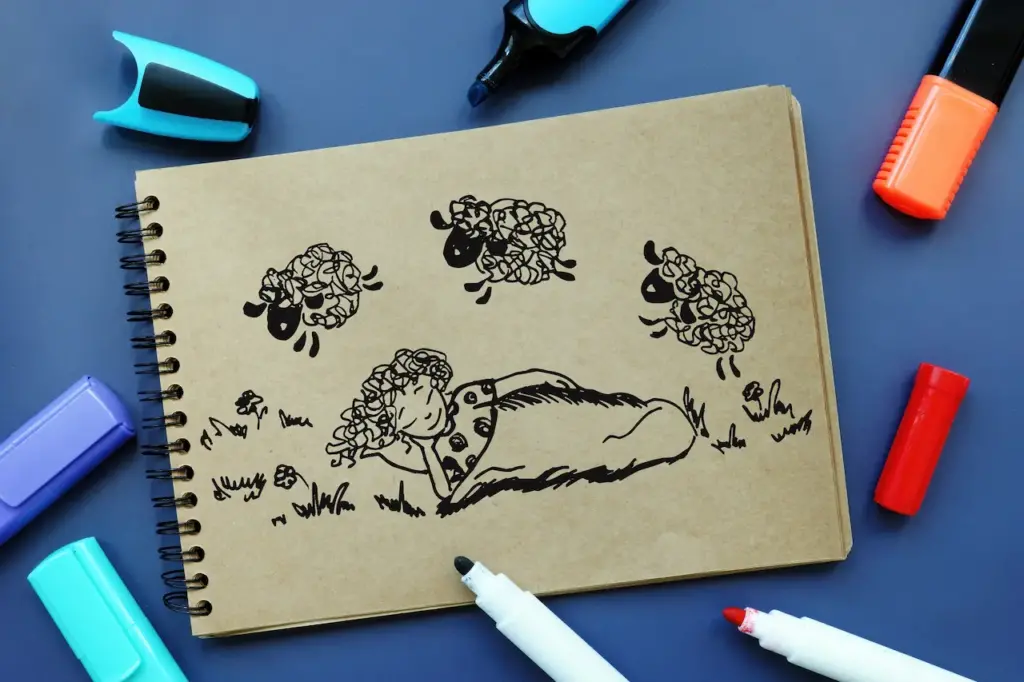
5. Sleep Disorders
- According to the 2016 Sleep Health Survey of Australian Adults (SHS), 20% of people suffer from insomnia, which is the inability to fall or stay asleep. 18% of people have Restless Legs Syndrome, which is an irresistible urge for the legs to be moved, especially when trying to go to sleep.
- One in every 2,000 to 4,000 people suffers from Type 1 Narcolepsy. This condition is characterized by excessive daytime sleeping and one or more symptoms such as sleep paralysis, hallucinations, insomnia, or sudden muscle weakness upon waking.
- N24 is a sleep disorder where the biological clock of an individual is out of sync with the light and dark cycles during day and night. Most commonly, it affects the visually impaired.
- In Australia, 2.8% of people have RLS which is not a symptom of another disorder.
- In Australia, 19% of people suffer from loud, frequent snoring or breathing pauses. 63% report feeling tired in the morning and 65% have one or more sleep-related symptoms during the day.
- Sleep disorders and physical and mental health are closely related. OSA and insomnia has increased by 30% to 80% in the last 20 years due to increasing obesity in Australia.
- Sleep disorders often occur in conjunction with depression or anxiety.
- Few Australians seek medical advice for sleep problems, and they often do so as a secondary issue.
Source :National Sleep Health Foundation Survey
6. Insomnia
- According to a 2019 report on Chronic Insomnia in Australia, 59.4% of people have at least one insomnia symptom three times or more a week.
- 50.4% of Australians suffer from chronic insomnia, which is defined as persistent symptoms lasting three months or more. The elderly are more likely to suffer from chronic insomnia.
- Out of these, 14.8% met the threshold of a clinical diagnosis for insomnia.
- The night symptoms can include difficulty falling asleep, trouble staying asleep, waking up too early, or being unable to go back to sleep. The symptoms are often seen during the day: fatigue, poor memory and irritability.
- Older people tend to wake up more at night and in the early hours of the morning – 47% compared to 22% for 18-24-year-olds – but younger people have trouble falling asleep.
Source: Sleep Health Foundation National Survey
7. Sleep Apnoea
- Between 5-10% of Australians suffer from Obstructive sleep Apnoea.
- OSA is more common in women than men. SHF National Survey showed that OSA is more common among those aged 18-24 than among those 65 and older.
- OSA is four times more common in men than in women (12.9% vs. 3.7%).
- Over 80% of sleep apnoea patients are undiagnosed, and only 27% Australian adults with sleep apnoea receive treatment.
- 39% Australian adults discovered they had sleep apnoea after their partner noticed that they stopped breathing during the night.
- OSA can cause cardiac arrests, which may lead to sudden death. Patients with sleep apnoea have a 4-9 times higher risk of being involved in an accident.
Source :National Sleep Health Foundation Survey
8. Sleep among Children & Teenagers
- According the Australian Government Department of Health, children aged between 5-13 should sleep 9-11 hours and adolescents aged 14-17 can get away with 8-10 hours.
- A LSAC Annual Statistical Report 2018 found that 88% of pre-teens meet the sleep requirements in Australia. This was due to strict bedtimes set by parents, and sports indulgence.
- However, high-schoolers struggle in bed. One quarter of the 12-15 year olds and half of the 16-17 years olds are not getting enough sleep.
- It’s strange that many students, more boys than females, feel like they get enough sleep even though they don’t meet the minimum requirement.
- The number of children reporting poor sleep quality increased with age. Teenage girls are more likely to experience this.
- According to The Well Spoken, and the Canberra Sleeping Clinic, if children miss even 30 minutes of their sleep it can impact on their intelligence and attendance at school. It may also lead them to be bullied.
- According to the Sleep and Mental Wellbeing Study 2017, up to 66% young Australians suffer from symptoms of insomnia.
Source Sleep Health Foundation National Survey. Australian Government Department of Health. LSAC Annual Statistical Report
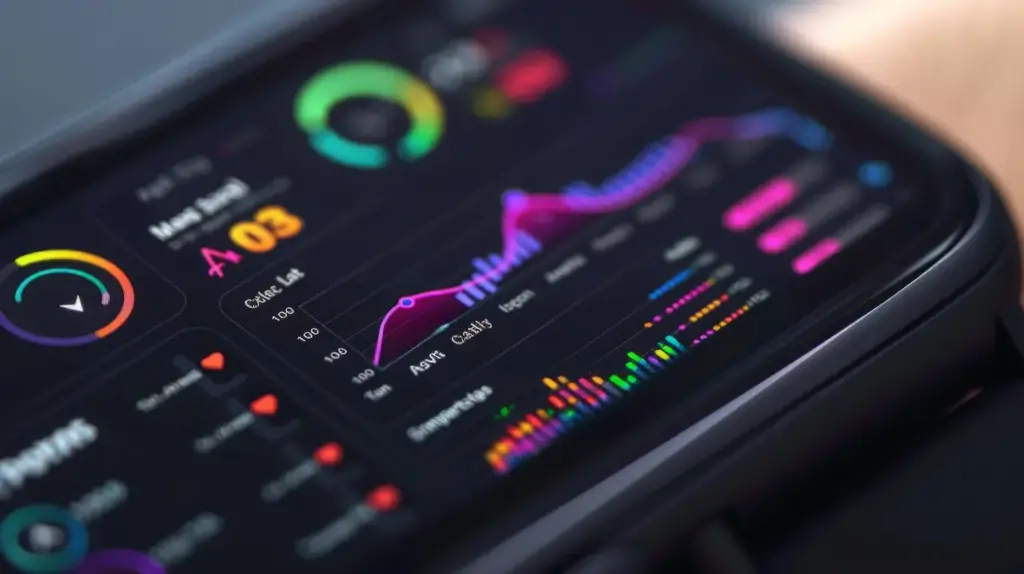
9. Sleeping among College Students and Millennials
- According to a 2017 survey conducted at an Australian University, 33% of college students sleep for less than 6 hours. Nearly 2/3rds reported that they felt like they were not getting enough sleep.
- A 2018 Philips Global Sleep Survey revealed that Australian millennials sleep more than their older counterparts – 7.2 vs. 6.9 hours.
- Australian millennials feel more guilty than the 35+ age group about their lack of sleep habits. 35% vs 26%
Source :Cross sectional survey of sleep practices of Australian university students, Philips Global Sleep Survey 2018
10. Sleep among Men vs Women
- According to the YouGov survey 2018, Australian men sleep quicker than women (13% as opposed to 7%) and have better sleep than women (41% as opposed to 33%).
- According to the 2016 Sleep Health of Australian Adults Report, men are more likely than women to snore loudly and frequently (24% vs. 17%).
- OSA affects women four times more than men – 12.9% to 3.7%.
- Researchers at the SleepGP Clinic found that between 2013 and 2015, women were more likely than men to suffer from sleep disorders related to daytime sleepiness.
- According to the 2016 Sleep Health Survey of Australia Adults more Australian women have fallen asleep while driving (22% vs. 17%). More Australian men fall asleep at work (21% vs. 13%).
- In the same survey more Australian women than men reported being late for work due to lack of sleep (21% vs. 14%). Women are also nearly 50% more likely than men to self-treat using over-the counter remedies, and 70% more likely.
- Sleep deprivation is a problem for both Australian men (22%) and women (27%).
- 20,1% of men and 26% women report losing sleep because their partner has a sleep disorder.
- Women in Australia worry more about getting a good night’s sleep than men, 31% to 21%. In bed, they are also more overwhelmed by their thoughts – 35% as opposed to 25%.
YouGov AU 2018 Report, Sleep Health Foundation National Survey. SleepGp Clinic
11. Social Jet Lag
- Social Jet Lag is a form of extreme fatigue that occurs when your biological and social clocks are out of sync.
- According to a study by sleep specialist Robert Adams at The University of Adelaide, 31% of Australians suffer from social jet lag of more than one hour. This means that their sleep schedule is out of sync with their natural sleep clock.
- Some full-time workers have it even worse. They suffer from social jet-lag of two hours.
Did you know? According to various studies, every hour of social jet-lag can increase your risk of heart disease and obesity by up to 33%.
National Sleep Health Study: Sleep Health of Australian Adults, 2016
12. Sleep and Technology
- According to the Growing Up in Australia longitudinal study of Australian children 2018 Annual Statistical Report, more than 28% and 27% respectively of 12 to 14-year-olds in Australia who have internet access in their bedroom did not meet the sleep guidelines.
- The Sleep Research Society reported that 13.8% of Australian adults use technology to wake up at least two nights a week. 12.7% only report using it one night a week.
- The majority of technology users are younger, have a job, suffer from financial stress and speak English second-language.
Did You Know? The Sleep Health Foundation states that using a bright screen repeatedly in the evening for five nights will delay your body clock by 1,5 hours.
Source: LSAC Annual Statistical Report of the Sleep Research Society
13. Sleep Temperature
- According to a study conducted by Nature’s Own in 2019, 29% of Australians were unable to sleep during the summer because of heat.
- In order to quench their thirst, 58% of Australians woke up in the night.
- Ten percent of Australians are concerned about the climate.
Did You Know? The ideal temperature for a bedroom is 60-67 degrees Fahrenheit.
Source: Nature’s Own Australia Sleep Report
14. Sleeping styles
- According to an Ecosa study conducted in 2019, 55% of Australians prefer sleeping on their side.
- 23% of Australians prefer freestyle sleeping.
- The third most popular sleeping position is the back.
Did you know? According to Better Sleep Council, the Soldier (11%), Starfish (7%), and Log (6%) are among the world’s least popular sleeping styles.
Source: Ecosa Mattress Survey 2018.
15. Sleep improvement is a priority for many people
- Around 40% of Australians are aware that a poor night’s rest can affect mood, motivation and concentration.
- According to the 2018 Philips Global Sleep Survey 63% of Australian adults actively take steps to improve their sleeping.
- 21% listen to soothing music. 18% have a schedule for bedtime and waking up. 18% are likely to take prescription sleep medications.
- According to the 2020 Philips Global Sleep Survey, 33% of Australians watch television and 31% reduce caffeine intake to sleep.
Did you know? According to the Philips 2020 global survey, worldwide, 60% of people are looking for new strategies or information on how to sleep better, and 30% already have a bedtime/wake up schedule.
Source: Philips Global Sleep Survey 2018/2020
16. Sleeping Mattress
- The Australian mattress market will grow at a CAGR of 3.5% by FY 2023
- Ken Research’s Australia Mattress Market Outlook 2023 report cites key drivers as the rising demand for customised camping mattresses, improved sleep, and alleviating orthopedic issues.
- According to the Journal of Chiropractic Medicine a new Mattress reduces back pain and improves sleep by 55%.
- Online Mattresses are gaining in popularity, as customers can order, review, purchase, and/or exchange a mattress with just a few clicks.
- Increasing demand for temperature-controlled mattress and self-cleaning mattresses in expected in the future.
